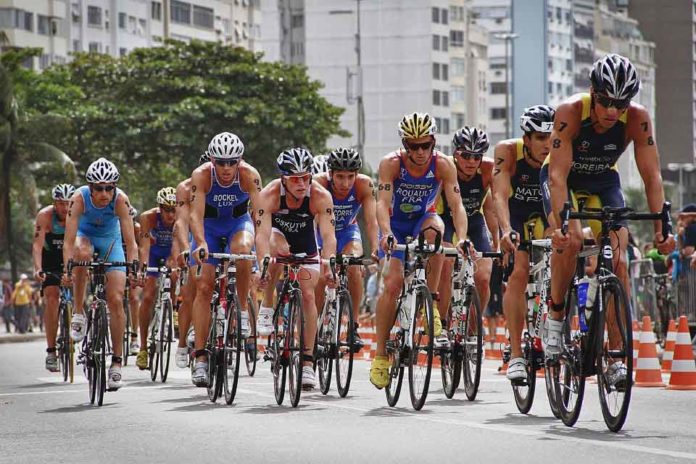Nature is full of examples of large-scale collective behavior. Humans also exhibit this behavior, most notably in pelotons, the mass of riders in bicycle races.
In a new study by the Jesse Belden, a researcher at the Naval Undersea Warfare Center along with his colleagues have described collective behavior in pelotons.
For the study, they used aerial video footage of bicycle races and studied peloton motion to figure out what causes changes in the group’s large-scale collective behavior. They discovered that riders travel through the peloton in a way like the flow in a liquid and watched two sorts of propagating waves inside pelotons.
The specialists discovered two kinds of waves influence the structure of a peloton. To begin with, the analysts found a wave that moves forward and backward along the peloton, for the most part, because of a rider all of a sudden hitting the brakes and others easing back to maintain a strategic distance from an impact. The other kind of wave is a transverse wave caused when riders move to one side or appropriate to evade a hindrance or to pick up a profitable position.
Pelotons keep up a determined structure, and analysts recently thought this form was driven by individual riders looking for an aerodynamic advantage. Be that as it may, aerodynamics just become an integral factor at the outside edges of the peloton.
Rather, the analysts discovered that peloton dynamics are likely determined by rider vision, with every rider keeping different riders inside a range of peripheral vision that is most sensitive to movement. Moreover, wave engendering speeds were steady with human response time as opposed to cognizant subjective choices like enhancing aerodynamics.
Belden said, “These findings shed new light on large-scale collective behavior in humans and could apply to varied topics including traffic and crowd management. Additionally, understanding the role of sensory input in collective behavior is important to building better autonomous vehicles like self-driving cars.”
“This research has also given insights into the cognitive processes involved with individual rider actions and their effects on broader peloton dynamics. Unlike birds or fish, you can talk to the cyclists.”
The study will be described by Jesse Belden, a researcher at the Naval Undersea Warfare Center and his colleagues at the American Physical Society’s Division of Fluid Dynamics 71st Annual Meeting, which will take place Nov. 18-20 at the Georgia World Congress Center in Atlanta, Georgia.
